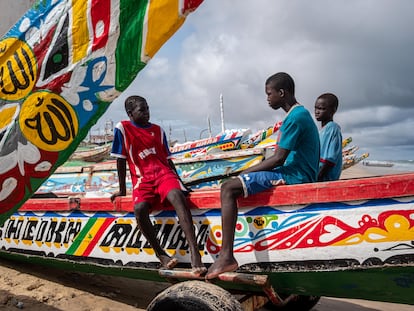All or nothing to make it to El Hierro, the last European outpost for African refugees
The westernmost island in Spain’s Canaries archipelago received over 1,200 people in two days fleeing from instability in Senegal, Mali and The Gambia

At the La Restinga port in El Hierro, dozens of huge, colorful launches float near the dock while two men walk across planks to inspect the engines and search for water leaks. Inside the launches are the remnants of a challenging trans-Atlantic journey to this far-flung spit of land in the Canary Islands archipelago — cans of food, raincoats, crackers, backpacks, water containers and shoes. Their conversation is drowned out by a nearby excavator removing the wreckage of other launches. Meanwhile, Red Cross workers tend to 129 new arrivals. Shouts suddenly bring everything to a halt.
”Another one! Another one!”
“Fuck! Let’s go — hurry!”
“Oh no — another one!”
A white boat slowly appears with 43 people, mostly young, celebrating their safe arrival. They come in feeling numb, with shaky legs and chapped lips. It’s the second boat today, the fifth in two days. And three more are expected before day’s end. In just two days, over 1,200 people have made it to El Hierro — 3,000 so far this year. Most are Senegalese, but there are also Malians and Gambians. These are huge numbers of refugees for this small island of 11,000 permanent residents to cope with.
In 2020, as the pandemic raged, the Canary Islands emerged as the epicenter of irregular migration to Europe. The island of El Hierr was ill-prepared. At a time of global quarantines, migrants who tested positive for Covid-19 faced prolonged isolation, sometimes for months. People were cramped into makeshift spaces while they waited and waited to be transferred to Tenerife for proper care and support. Now the transfers happen continuously and waits are short, but there is still a lack of suitable facilities for holding people the mandatory 72 hours. It’s a problem all over the Canary Islands, where dirty docks and ships have been turned into temporary living spaces while Spain’s Ministry of the Interior readies better facilities.
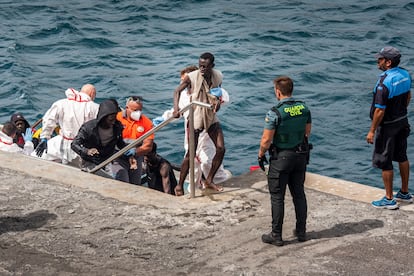

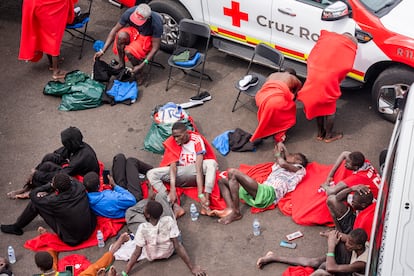

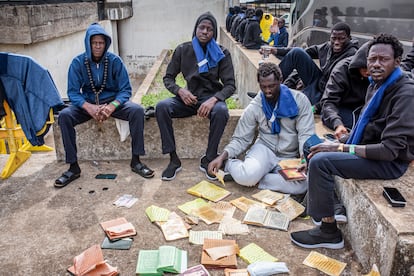
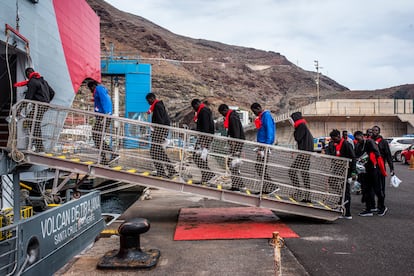
In the past, El Hierro was often stumbled upon by chance. Trade winds and currents pushed boats far from their routes and floated up on the island 20 days later, often with many dead passengers. Taking a chance on making it to the last European outpost in the Atlantic Ocean used to be too dangerous to consider. But now the island is no longer an accidental destination. “We knew where we were going — we navigated straight here,” said a young man who had just stepped onto the dock. One reason for this change is that the route to El Hierro avoids all the other boat traffic leaving from Senegal and the Mauritanian coast, where Spanish and local security forces are positioned to intercept them. So they go all in — El Hierro or bust.
The economic and political situation in Senegal is dire. The government has imprisoned the main opposition leader and is forcefully repressing protests. Young people are fleeing the country in droves, many of them heading to the Canary Islands. According to Spain’s Ministry of the Interior, irregular entries to the archipelago have risen 20% this year (as of September 30). When the weather is better from September to January, more people will certainly take to the sea.
‘We can’t cope’
It’s time to leave. Two buses park in front of an open-air sports center in the town of San Andrés, next to a sheep farm. Dozens of Senegalese leave the improvised living space and head to the ferry that will take them to Tenerife. An 11-year-old boy lying on the ground watches them impassively. He is alone, one of a number of minors who have been “detained” indefinitely by their Spanish hosts.
A group of six women are celebrating at the port, happy to be going to Tenerife. It’s rare to see women among these crowds of migrants. They explain that life in Senegal is difficult due to the hostile political climate and lack of opportunity. “There are no jobs, even if you’ve studied and gone to university… Anyway, you can’t make enough to live on even if you find a job,” said a Senegalese woman who speaks perfect English.
Late in the afternoon, a Coast Guard team goes out to rescue the fifth migrant boat of the day. No one knows where the new arrivals will be accommodated. “This is a real crisis — we can’t cope,” said one of the workers supervising the sports center. The latest arrivals have just come in, some of them badly injured. One man in a wheelchair cries and moans as he’s carried inside.
Thirty minutes later, we overhear a phone conversation. “What? A bus is bringing another 60 people here?”
There’s just no room — only 20 beds are available for the hundreds of new arrivals. Around 500 were recently taken to a monastery in Frontera for temporary lodging. The abandoned monastery with crumbling walls seems to be the only available place to put everyone. There are folding cots everywhere, spaced less than a foot apart. The entire windy and dirty courtyard is full of cots. Two people quickly try to clean the place up to get it ready for the next arrivals.
Three years after boats started appearing regularly in El Hierro, there is still no established and well-equipped facility to process and help migrants arriving after arduous journeys of six days or more. Some things are just hard to change.
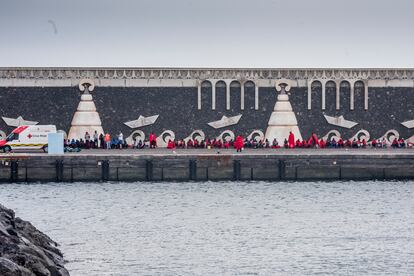
Sign up for our weekly newsletter to get more English-language news coverage from EL PAÍS USA Edition
Tu suscripción se está usando en otro dispositivo
¿Quieres añadir otro usuario a tu suscripción?
Si continúas leyendo en este dispositivo, no se podrá leer en el otro.
FlechaTu suscripción se está usando en otro dispositivo y solo puedes acceder a EL PAÍS desde un dispositivo a la vez.
Si quieres compartir tu cuenta, cambia tu suscripción a la modalidad Premium, así podrás añadir otro usuario. Cada uno accederá con su propia cuenta de email, lo que os permitirá personalizar vuestra experiencia en EL PAÍS.
¿Tienes una suscripción de empresa? Accede aquí para contratar más cuentas.
En el caso de no saber quién está usando tu cuenta, te recomendamos cambiar tu contraseña aquí.
Si decides continuar compartiendo tu cuenta, este mensaje se mostrará en tu dispositivo y en el de la otra persona que está usando tu cuenta de forma indefinida, afectando a tu experiencia de lectura. Puedes consultar aquí los términos y condiciones de la suscripción digital.
More information
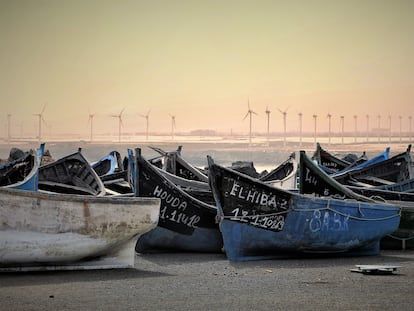
A journey told through the silent remains of migrant boats
Archived In
Últimas noticias
Most viewed
- Sinaloa Cartel war is taking its toll on Los Chapitos
- Oona Chaplin: ‘I told James Cameron that I was living in a treehouse and starting a permaculture project with a friend’
- Reinhard Genzel, Nobel laureate in physics: ‘One-minute videos will never give you the truth’
- Why the price of coffee has skyrocketed: from Brazilian plantations to specialty coffee houses
- Silver prices are going crazy: This is what’s fueling the rally

